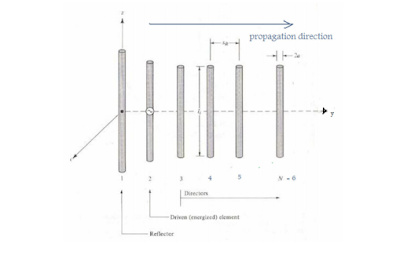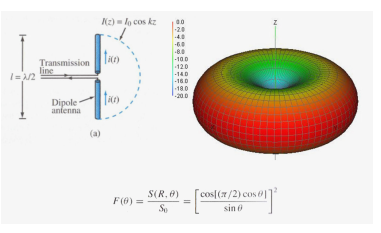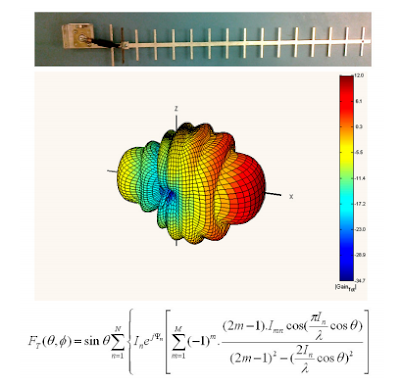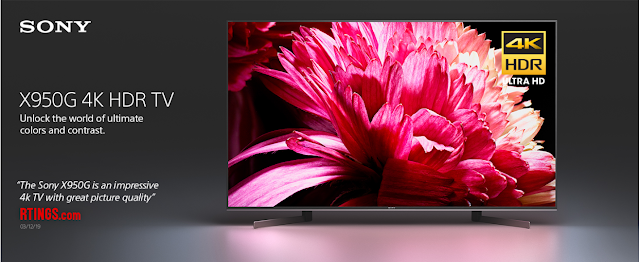The fundamentals of our antenna project are described through basic antenna characteristics. In general this starts with establishing the antenna’s radiation pattern, gain and directivity.
The radiation pattern is a 2-D or 3D plot which assesses the intensity in which electromagnetic waves propagates as a function of orientation. The gain of an antenna indicates how well the signal power amplifies in one direction, where its directivity characterizes the direction and magnitude of maximum power amplification.
Complete free tutorial antennas design , diy antenna , booster antenna, filter antenna , software antenna , free practical antenna book download !
Which NETGEAR Unmanaged PoE Switch is right for you?
Gigabit Ethernet Ports with 5 Ports with 4 x PoE with PoE 55 Watt
Unmanaged Switch: Plug and play solution to connect all your network devices without the complications of configuration or management software -- yet achieve a reliable and secure network.
Unmanaged Switch: Plug and play solution to connect all your network devices without the complications of configuration or management software -- yet achieve a reliable and secure network.
NETGEAR Unmanaged PoE Switch Advantages
Designed for Whisper-Quiet Operation: Most switch models are fanless or designed to minimize fan noise to protect your business environment.
Power Saving and Energy Efficient: We care about saving energy for your business so our switches are compliant with IEEE802.3az Energy Efficient Ethernet mode.
Plug-and-Play: No configuration necessary - perfect for small-medium businesses.
Smart Managed Plus: Empowers growing small businesses with basic capabilities to configure, secure, and monitor their network beyond simple connectivity at an affordable cost - an ideal upgrade from unmanaged switches.
GoPro Hero8 Black - Beyond The Next Level
Unshakable HERO camera ever. A streamlined design makes it more pocket able than ever, and swapping mounts takes just seconds, thanks to built-in folding fingers. And with the optional Media Mod, you get ultimate expand ability to add more lighting, pro audio and even another screen. There’s also game-changing HyperSmooth 2.0 stabilization with jaw-dropping slo-mo.
The camera has a voice control feature.The HERO8 Black has folding mounting fingers eliminating the need for a frame.A specific Floaty will also be available for the HERO8 Black.
- Streamlined design: the reimagined shape is more pocketable, and folding fingers at the base let you swap mounts quickly. A new side door makes changing batteries even faster, and the lens is now 2x more impact resistant.
- HyperSmooth 2.0: Smooth just got smoother. Now HERO8 Black has three levels of stabilization—On, High and Boost—so you can pick the best option for whatever you do. Get the widest views possible, or boost it up to the smoothest video ever offered in a HERO camera. Plus, HyperSmooth 2.0 works with all resolutions and frame rates, and features in-app horizon leveling.
- TimeWarp 2.0: Capture super stabilized time lapse videos while you move through an activity. And now, TimeWarp 2.0 automatically adjusts speed based on motion, scene detection and lighting. You can even slow down the effect to real time—savoring interesting moments—and then tap to speed it back up.
- LiveBurst: Record the moments 1.5 seconds before and after your shot, so you can choose the best single frame for the perfect photo—or an awesome shareable video.
- HERO8 Black Mods: Vloggers, pro filmmakers, and aspiring creators can do more than ever imagined with quick loading accessories like flashes, microphones, LCD screens and more; Just add the optional media mod to up your capture game.
Best Sony TV Deals Bravia 85 Inch Works with Alexa
With 4K-X Reality Pro, you experience more natural picture and object based super resolution . Alexa inside Sony 85 Inch TV with Android Operating Systems and Amazon account , enable smart device connected and controlled via Alexa. You can talk with Alexa and asking Alexa to turn on or off your device , switch channel TV, show your front door bedroom via camera, and others smart devices connected to Alexa.
From Manufacturer Video Sony XBR85X950G X950G 85 Inch TV: 4K Ultra HD Smart LED TV with HDR and Alexa Compatibility . Check It Out !
Best Gaming Headset For Real Gamers
The Best Gaming Headset MPOW EG3 Pro Immerse yourself in games with this surround
sound gaming headset. The microphone boom not
only swivels but is also bendable,
sound gaming headset. The microphone boom not
only swivels but is also bendable,
allowing you to place it exactly where you want it. You can quickly adjust mic and volume buttons
without disrupting your game.
without disrupting your game.
the Mpow gaming headset produces superior sound
clarity and punchy bass for a wide soundscape.
The metal
frame headset is strong and durable enough to
clarity and punchy bass for a wide soundscape.
The metal
frame headset is strong and durable enough to
last a long sessions. The LED lights designed on ear cups
are cool enough to highlight the atmosphere of the whole
game.
are cool enough to highlight the atmosphere of the whole
game.
Mpow Gaming Headset (2019 Edition)Sound quality— If you need to
hear more audio cues, The Mpow EG3 Pro Gaming headphone will be
your choice.
➤ 50mm speaker drivers and 20Hz-20KHz frequency response give
you a more expansive sound profile.
➤ Microphone—Having a high-quality mic means your teamwork will
always be on point in the battle.
➤The headphone's microphone is very good and picks up voices with
 a clear, natural sound.
a clear, natural sound.➤ Comfort—The large comfortable leatherette ear
cups alleviate
pressure around
the ears over long
periods of time.
Sound built for gaming: featuring 50mm speaker drivers, the Mpow
Gaming headset
produces superior sound clarity
and punchy bass for a wide soundscape.
Equipped with better Surround sound, The upgraded gaming headset
brings you
heightened aural awareness so you can hear every single detail—
whether it is subtle footsteps or enemy gunfire
➤ Cross-platform—this gaming headset is just
phenomenal and compatible with PC, Mac, PlayStation 4,
PlayStation 4 Pro, Xbox one, Xbox One S, Nintendo Switch,
Nintendo 64 and etc.
Trouble shooting tips:
1. Check that the mic m
ute switch on the in-line controls is not set to "mute".
2. If you're connected to a computer, you need to connect the
headset to the computer through a 2-in-1 audio aux cable
(included).
Specification
【1】Speaker size: 50mm
【2】Sensivitity: 103+/-3dB
【3】Frequency range: 20 Hz-20KHz
【4】Microphone: 6. 0x 5. 0mm
【5】Microphone sensitivity: -38+/-3dB
【6】Directionality: omni-directional 【7】Cable length: 2. 2M +/-0. 15
【8】LED working voltage: DC 5V +/- 5%
【9】Headset jack: USB+3. 5mm 4 Pin 【10】System support: The 32-bit and 64-bit Win 7/Win8/Win8. 1/Win
10/XP/Mac/PS4/PS4 SLIM/PS4 PROXBOX ONE/XBOX ONE S/XBOX ONE X
Subscribe to:
Comments (Atom)


























